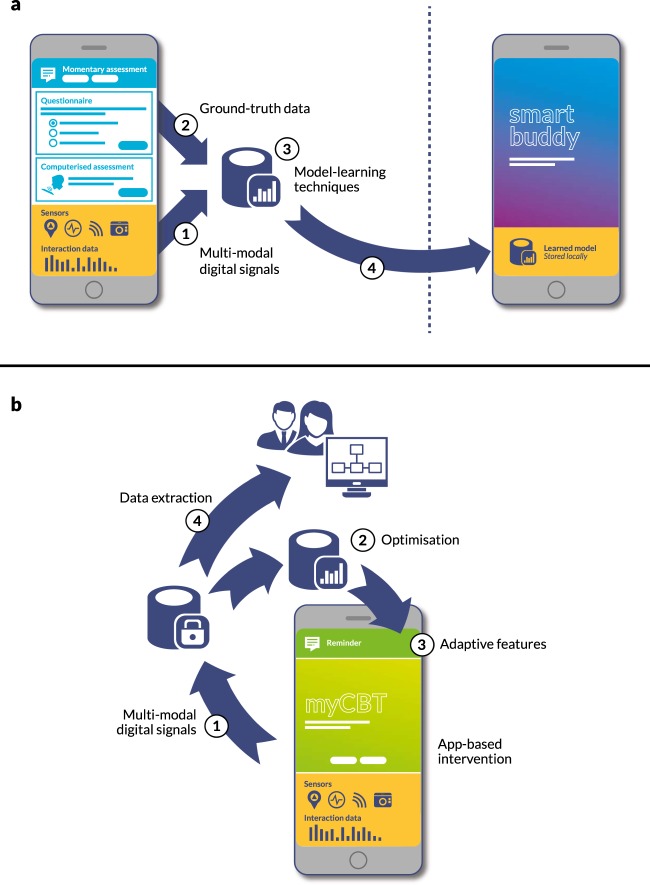Fig. 1.
Two models of integration between digital phenotyping and digital interventions. Figures and letters refer to those shown in the diagram. Model (A) describes a “learn-then-implement” approach where (1) multi-modal digital signals (e.g. sensor data) are combined with (2) ground-truth data (such as self-reported mental health) and used to learn a digital phenotyping predictive model, for example, predicting a change in mental health status from GPS and activity data. This model can then be deployed into future interventions (4) to trigger intervention components based on changes in mental health state predicted by digital signals alone. Model (B) describes a “continuous learning” approach, where (1) digital signals are automatically collected alongside intervention outcomes data. These are used to (2) continuously update and refine an intervention model conditioned on some goal, for example achieving a positive change in mental health status. This model is then used to trigger and tailor different aspects of the intervention (3). The resultant outcomes feed back into the learning process. Data collected via this approach can also be extracted for analysis (4)

